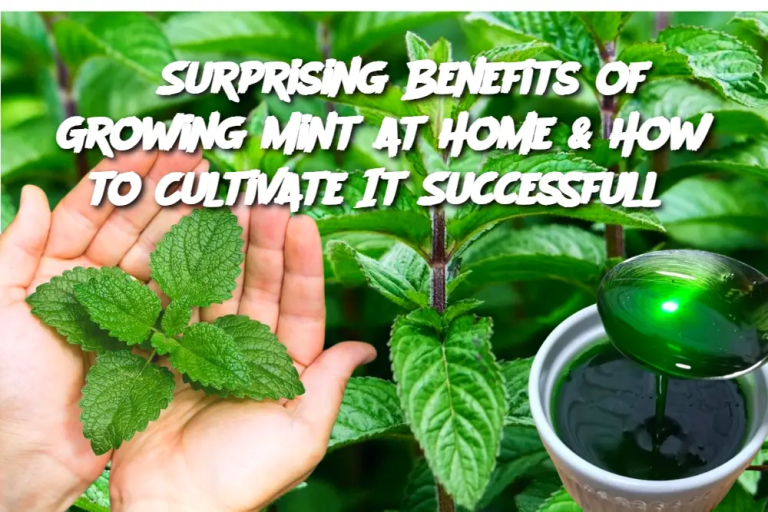ADVERTISEMENT
Introduction:
Mint is a versatile and fragrant herb that can elevate your dishes, drinks, and even your home garden. From adding fresh flavor to teas and salads to serving as a natural remedy, growing mint at home offers numerous benefits. Not only is it easy to cultivate, but mint is a hardy plant that thrives in various environments. This article will explore eight incredible reasons why you should consider growing mint in your garden or on your windowsill, as well as provide step-by-step instructions on how to grow it successfully.
Ingredients:
Fresh mint plant or mint seeds
Well-draining soil
A container or garden space
Water (regular, but not excessive)
Directions:
Choose Your Mint Variety: Start by selecting the type of mint you want to grow. Popular varieties include spearmint, peppermint, and chocolate mint. While you can grow mint from seeds, it’s easier to begin with a small plant or cutting.
Select the Right Location: Mint grows best in partial to full sunlight. It can tolerate a range of soil types, but make sure the soil is well-draining to prevent root rot. If you're growing it in a container, choose one that is at least 12 inches deep and wide.
Prepare the Soil: Mint prefers slightly acidic soil with a pH between 6.0 and 7.0. Mix compost or organic matter into the soil to provide essential nutrients. For container growing, use a high-quality potting mix.
Plant Your Mint: If you are planting a cutting or young mint plant, dig a hole that’s large enough for the root system to spread. For seeds, sow them about 1/4 inch deep and space them at least 12 inches apart. Cover with soil and water lightly.
Water Regularly: Mint likes moisture but doesn’t like being waterlogged. Water your mint regularly, ensuring that the soil stays damp but not soaked. Allow the top inch of soil to dry before watering again.
Maintain Growth: Mint is a fast-growing plant, so be prepared to prune it frequently to prevent it from becoming too invasive. Cut back the mint stems regularly to encourage bushy growth and prevent it from spreading uncontrollably.
Harvesting: You can begin harvesting mint once the plant has established itself. Snip off the leaves as needed, but avoid removing more than one-third of the plant at a time to allow it to keep growing.
Winter Care: Mint is a perennial plant and can survive the winter, especially if you live in a temperate climate. In colder areas, you may want to bring your container mint indoors or mulch the plant in the garden to protect it.
Serving and Storage Tips:
Serving: Fresh mint can be added to a variety of dishes, including salads, soups, smoothies, desserts, and beverages. It also makes a refreshing garnish for cocktails like mojitos or teas.
Storage: If you have an abundance of mint, you can freeze the leaves for later use. Simply wash and dry the mint, chop it, and place it in an airtight container or freezer bag. Alternatively, mint can be dried by hanging the stems upside down in a cool, dry area.
Variations:
Mint Tea: One of the most popular ways to enjoy fresh mint is by brewing it into a soothing herbal tea. Simply steep a handful of fresh mint leaves in hot water for 5–10 minutes, depending on your desired strength.
Mint-Infused Water: Add a few sprigs of mint to a pitcher of water for a refreshing twist. This is great for hydration, especially on a hot day.
Mint Pesto: For a unique variation, replace basil with fresh mint in a pesto recipe. Blend mint, olive oil, garlic, pine nuts, and Parmesan cheese for a fragrant, herby sauce.
FAQ:
ADVERTISEMENT
